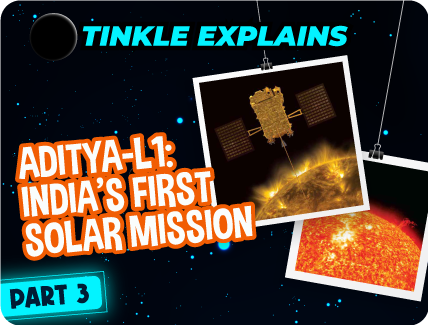

















On 2 September, 2023, a PSLV XL rocket placed Aditya-L1 in low Earth orbit (LEO) above the Earth. A Low Earth Orbit (LEO) is, as the name implies, an orbit positioned relatively close to the Earth’s surface. Generally defined for altitudes of less than 1000 km, LEO can be as low as 160 km above Earth, which is still significantly above the Earth’s surface.
After reaching this altitude, the satellite executed four Earth-bound manoeuvers to attain the necessary speed to move out of the Earth’s sphere of influence (SOI). Earth-bound manoeuvers, also referred to as burns, change a spacecraft’s orbit while it orbits the Earth. Then the spacecraft performed a special move called the trans-Lagrange manoeuvre to send Aditya-L1 on its way to Lagrange point L1. We will learn about the mechanism of orbital manoeuvres in the next article.
On 30 September, the spacecraft escaped Earth’s SOI. It essentially waved goodbye to Earth and headed into deep space! After Mangalyaan, Aditya-L1 became the second Indian spacecraft to exit Earth’s SOI and explore deep space. Now Aditya-L1 has been injected into a halo orbit around L1.
A halo orbit is an irregularly shaped, three-dimensional orbit near unstable Lagrange points (L1/L2/L3). This orbital path is situated in a plane that is approximately perpendicular to the line connecting the two large bodies of the Sun and Earth. The satellite will spend its whole mission life orbiting around L1.
Scientists are eagerly waiting to see what amazing things it discovers in this part of the universe!
About the writer:
Tulika is an alumna of NIT Jamshedpur and IIM Lucknow. She is the founder of Periodic Table Game Atomics and myschoolz.com—a platform that helps parents find the right school for their kids. Before venturing into entrepreneurship, she worked for Hewlett Packard, Alstom, and Vedanta. Her passion for writing for children stems from the belief that kids are incredibly curious and always ready to explore new things. Through her writing, she aims to foster a love for learning in the next generation.
Click here for Part 4